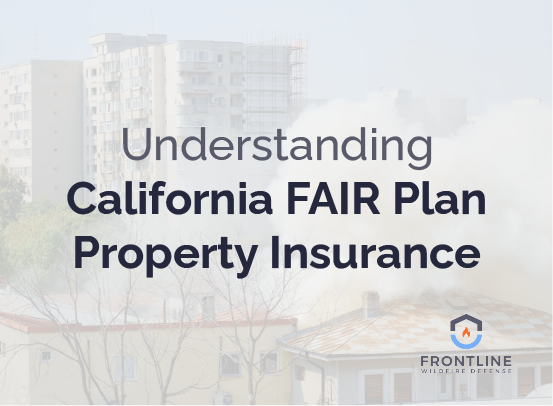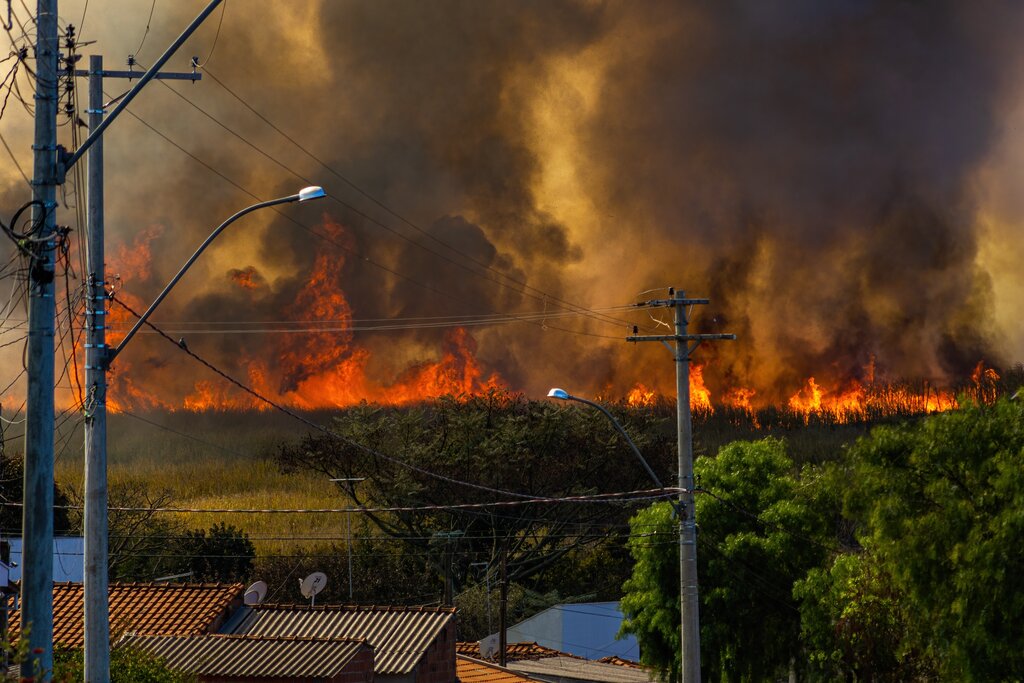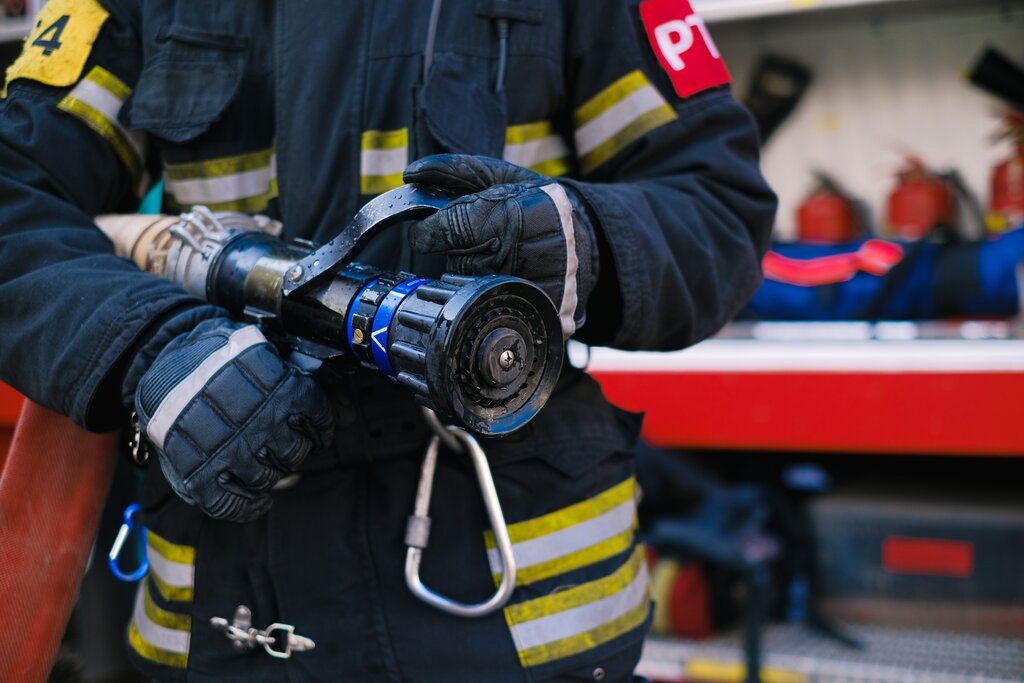Fireproof Landscaping to Reduce Chances of Loss
As wildfire raged over the mountain and approached her rural ranch, Lisa Comstock grabbed her three dogs and jumped into a nearby water trough.
“The flames were coming over that mountain and surrounding this place like there was no tomorrow,” she said. “I jumped in the water trough with all the dogs, and the horses came up around. Thank God they just stayed here.”
At one point, Lisa said, she was sure she wasn’t going to make it. But talking to her animals helped both her and the animals to stay calm.
All she could think of was, “If this is how I go, I’m not leaving these animals.”
Anywhere at Any Time
That wildfire occurred in central California in 2015. But it could have happened anywhere at any time.
If wildfire approached your home, would you be prepared?
You can increase your preparedness and significantly reduce your chances of loss if you fireproof your landscaping now.
The University of Wyoming extension recommends utilizing the “3 R’s of Defensible Space” in order to make your landscaping fire-resistant:
Remove, Reduce, Replace.
Remove
First, remove the following:
- Any dead vegetation and weeds.
- Dead wood from shrubs.
- Low tree branches.
- Firewood piles from near the house.
Reduce
Then, reduce the amount of flammable material within your landscaping:
- Break up dense shrub fields and thick tree cover.
- Reduce the amount of highly flammable native vegetation.
Replace
Finally, consider replacing:
- Highly flammable plant material with less flammable, low-growing species within 30 feet to 100 feet of your house
- Flammable roofing and siding with fire-rated non-combustible materials, such as class A asphalt roof shingles or fiber cement siding. (You might also consider installing exterior sprinklers.)
- Plastic attic vents and soffits with metal ones. Vents should be less than ¼-inch mesh to prevent embers from passing into the attic or other parts of the house.
Did you know that burning pine cones, branches and other material can be carried a half mile or more beyond the front of an intense wildfire? These fires also produce showers of embers. And embers that land on wood shingle roofs, trash piles, or dried grass often start new fires.
–Article Continues Below–
Defensible Space
Defensible space is the area around your home in which vegetation, debris, and other types of combustible fuels have been treated, cleared, or reduced in order to slow the spread of wildfire. When you fireproof your landscaping, you’re creating defensible space.
In Wyoming, the minimum amount of defensible space for most homes is 100 feet from the house, but a heavier amount of vegetation or steep slopes could increase that area to at least 200 feet. FEMA divides this space into three concentric zones, and recommends the following guidelines when you fireproof each zone:
Zone 1
This is the area within 30 feet of the home. Here you’ll want to eliminate all combustible materials, such as fire-prone vegetation, firewood stacks, combustible patio furniture, umbrellas, and lumber decking. Desirable substitutions include irrigated grass, rock gardens, stone patios, metal patio furniture, and noncombustible decking.
Also, remove all shrubs and trees except for a few individuals. Thin the trees to a spacing of 10 feet between tree crowns. Make sure that plants in this zone are of a fire-resistant variety (i.e., mostly leafy species). And keep them well-watered to maintain adequate moisture content. For a list of fire-resistant plants indigenous to Wyoming, click here.
Be sure to prune away any branches within 10 feet of your home, and 15 feet away from any chimney outlets. In addition, clear away any pine needles, leaves, limbs, and other debris from your roof and gutters.
Zone 2
This is the area between 30 and 100 feet from the home. Here you’ll want to incorporate hardscape features, such as driveways and paved/gravel walkways or patios. These will create firebreaks throughout your yard.
Thin all trees to a spacing of 8 feet between tree crowns. Plants here should also be fire-resistant, low-volume vegetation that retains moisture.
Firewood and other combustible material can be stored here, but keep it at least 15 feet away from trees (such as on a graveled area). Structures such as a detached garage, pump house, pergola or utility shed should be separated from the home by at least 50 feet. (Even more if the structure is used to store combustible materials.)
Store any fuel tanks away from your home, at the minimum distance required by code (or greater). Alternatively, you can place them underground or on a noncombustible pad.
Zone 3
This is the area greater than 100 feet from your home. Thinning and pruning in Zone 3 can be more limited than in Zone 2. The goal here is to improve the health of the wildlands and help to slow any approaching wildfire. It’s also an aesthetic transition between the more heavily modified Zone 2 and the unmodified surroundings.
The following video clip, produced by Colorado State University Extension Service, provides further guidelines on how to fireproof landscaping, which Wyoming residents should find helpful:
Sources:
Featured Image: Creative Commons Photo by James Brooks









